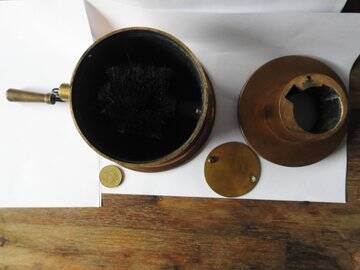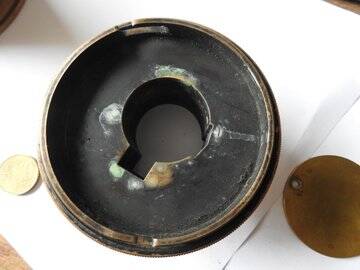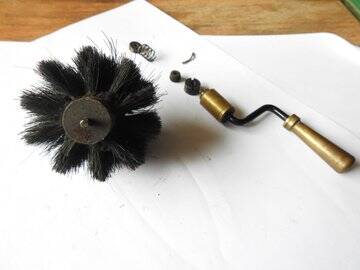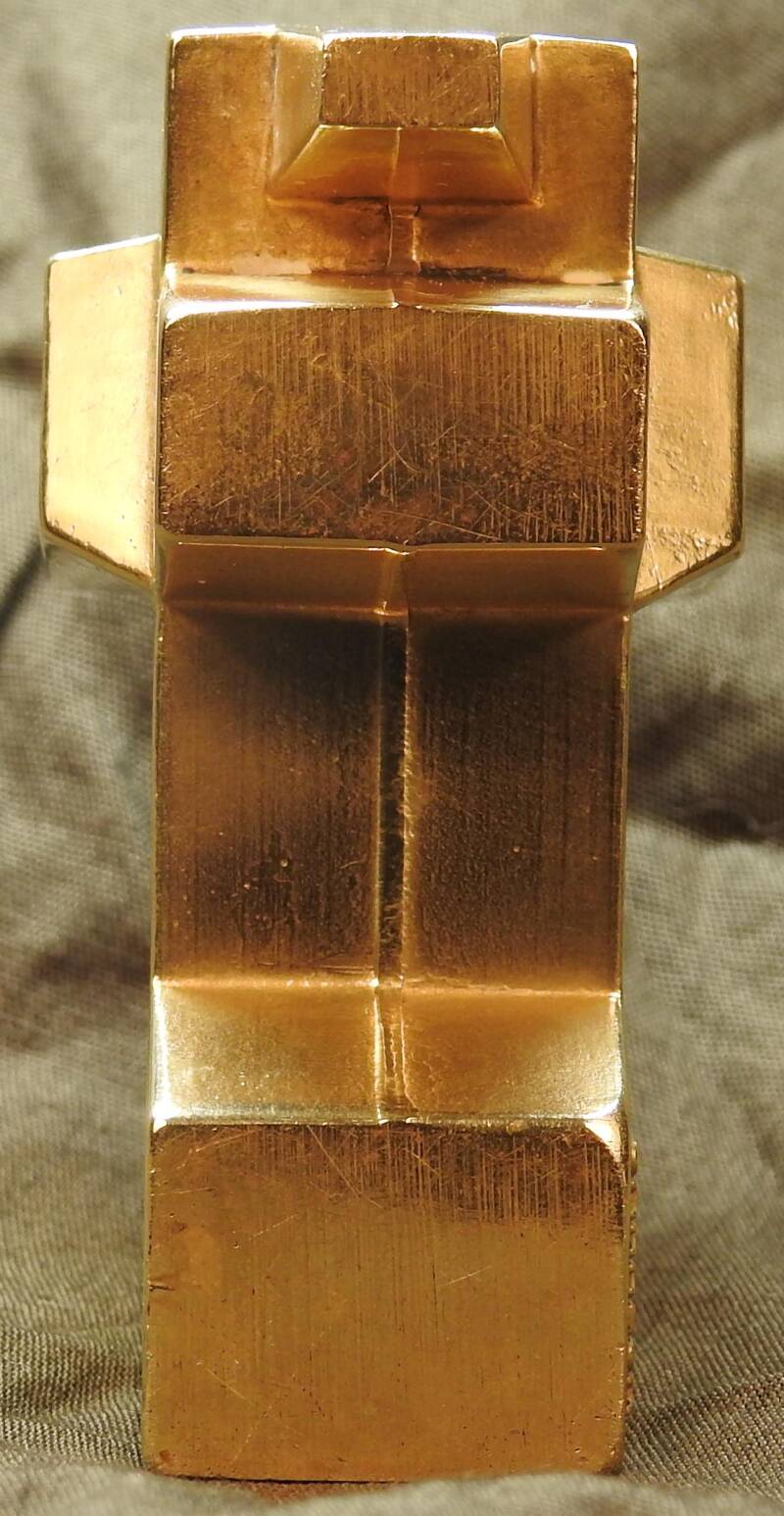
New project, restoration of a 1930 sailboat model, this model is intended for sailing, at that time it was mainly a popular pastime during the weekends, (photo: model sailboat competition paris)
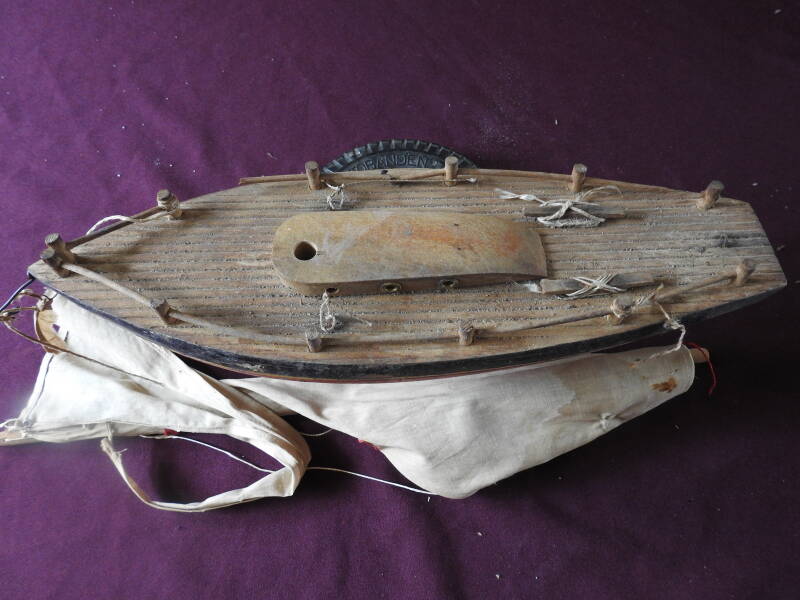



Rare British spil holder
Manufactured by B. Days in Great Britain early 19th century, and perhaps designed by A.W.N. Pugin (1812-1852), architect, designer, and pioneer of the Gothic revival in decorative arts in England,
A spill was a long splinter of wood that was held ready to transfer a flame from the fireplace to lit a lamp or candle, Spills were used long before matches were developed, and even after the invention of matches, they were preferred because of their convenience and low cost.
I found a few later models on the internet, but these were quite plain, less decorated, and also all damaged, missing the crowns on the top.
A coat of arms is applied on two sides where the coat of arms is flanked with a standing lion on the left and a unicorn on the right side, above the coat of arms is the name of the maker "Days" and below the coat of arms the text "Dieu Et Mon Droit " ("God and my right), it is the motto of the monarch of the United Kingdom.
Hight 16.5 cm, the foot 8 cm and the spilholder is 3.5 cm in diameter.
When I acquired it it was bent in a strange way (image with white background) the yellow beeswax candlestick came with it.







Art Deco mantle clock yellow and red coper ca. 1920-1930 after Amsterdam school style, no marks, not even on the movement. Possibly a unique piece made as a study piece or test of competence of an art academy.
Size: 36.5 X 46 cm. 14.37 X 18.11 inches



Bought this clock in 2003 for 2 euros on a fleamarket in Lokeren Belgium, it was completely black due to dirt, oxidation and sut, dented and with a loose movement, it caught my attention because this clock is unmistakably made in Amsterdam School style, which was very popular at the time and possibly unique in its kind, in all those years I have not been able to find a second one, its maybe a piece of work as a test of competence of someone at an art Academy,
Now 20 years later I have cleaned it.
During disassemble and cleaning saw that it was made of all sorts of parts from other utensils, the 2 copper apliques are hand-hammered, the rectangular decorative strip is a furniture decorative ornament, the sphere is a curtain rod end cap in which a wood screw has been soldered, the bras manchet soldered to it is a part of a oillamp, its the fitting for the burner.
The end result after cleaning and reassembling, over the last 20 years have searched the web countless times for a simular one, so far without result, judging by style it was made between ca 1920 and 1930 Anyone who can tell me more about this rather odd clock please let me know! @WsNL_Henry at Twitter










Vintage copper/brass post office ink stamp cleaning device for round and rectangular stamps
Body and attachment with bayonet lock are made of heavy solid red copper, the crank and upper lid made of yellow copper/brass, the crank turns a cylindrical brush, The brush bristles are organic, possibly pig origin, it smells like very old ink&oil, and leaves a little black on fingers when rubbing, not marked. total weight 2.7 kg (95.23 oz), diameter 10.5 cm (4.13 inches), height 12.5 cm (4.92 inches) date unknown, late 19th earley 20th century? . Found two simular ones on the web but they are totaly made of yellow copper/brass, let me know if anyone knows the exact date of fabrication and time period of use
Elephant Artwork by Nicolas Carréga (1914-1993)
Nicolas Carrega was a French painter, engraver, sculptor, tapestry designer, stained glass designer and medalist born February 21, 1914 in Bonifacio (Corsica), died January 29, 1993 in Viroflay (Yvelines).
stylized elephant solid brass
Length 6cm Height 4cm Width 3cm. Signed on the leg "CARREGA" 1980s


